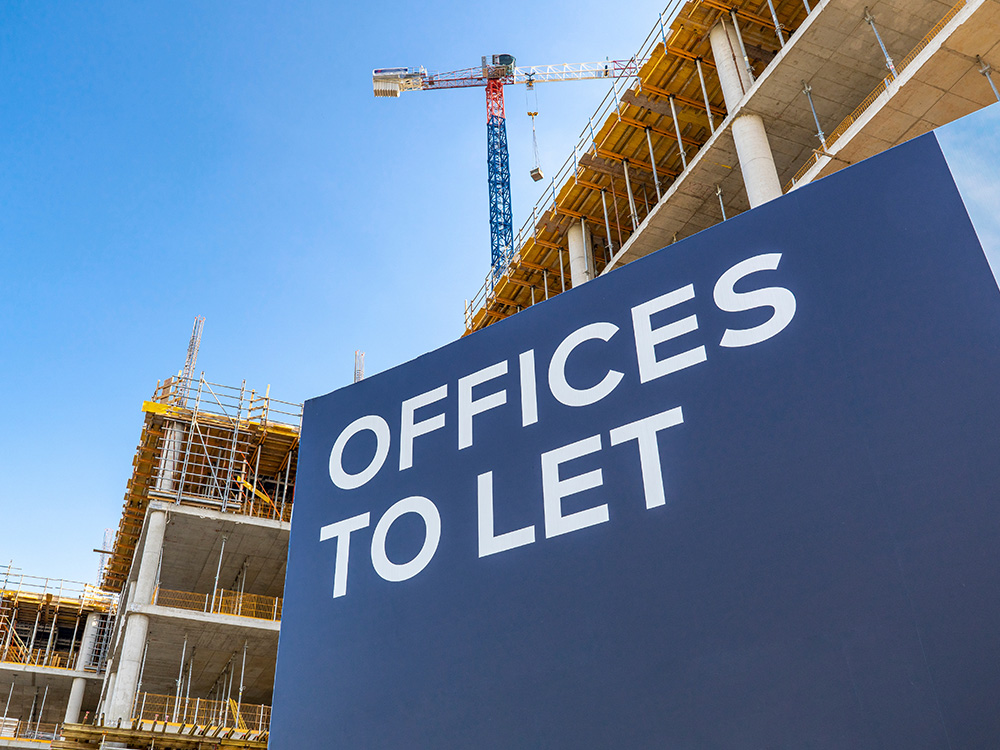On this page
Bridge loan for business What's the difference between a commercial bridge and a business bridging loan? What is the definition of a commercial bridge loan? Why not just use a commercial mortgage? What can commercial bridge loans be used for? What can business bridging loans be used for? What is a commercial property bridge loan? What types of property can commercial bridging finance can be used to purchase? What are the four most common uses of commercial bridging finance and how can I use one? What makes a commercial bridging loan different from a commercial mortgage? What makes a residential bridging loans different from a commercial bridging loans?Bridge loan for business
What's the difference between a commercial bridge and a business bridging loan, how do they work and how can you get one?

What's the difference between a commercial bridge and a business bridging loan?
A commercial bridging loan is a short-term loan secured by property for commercial use, typically property investment.
Commercial bridging has many uses, typically though they're used to buy property as an investment, which could be either a commercial property, mixed-use property or residential property. Also known as commercial bridging finance, the term 'commercial bridge loan' is often interchangeable with the term 'business bridging loan', and whilst they can mean a similar thing, for those in the market they do have slightly different uses.
A business bridging loan is a short-term loan secured by the assets of a business for business use, typically used to cover an unforeseen cash flow issue.
The term business bridging loan is more often used to describe a bridging loan that will be used for business cash flow primarily to assist with financing operating costs. This could be paying down debts such as settling company tax bills, or used to cover expansion, hiring staff, investment in plant or machinery, and of course, purchasing property for the business to operate in.
What is the definition of a commercial bridge loan?
A commercial bridging loan is a short-term loan secured by a business. Those who take out a commercial bridging loan must have a plan in place to pay back the loan when it is due. This is often referred to as the exit strategy. An exit strategy could be completed by selling a property, raising funds from the business, or refinancing to a longer-term, lower-interest-rate loan, such as a commercial mortgage.
Why not just use a commercial mortgage?
In the UK commercial mortgages typically take on average 12 weeks to complete. If you have a particularly straightforward requirement then at best it will take a month, and in some instances where your circumstances are not straightforward it can take significantly longer.
Bridge loans on the other hand can be completed in a matter of days. The average bridging loan takes between 10 - 20 business days, but it can be expedited in as little 3 days, depending on your situation. So where there is an urgent need for commercial financing a commercial bridge loan can be more effective.
What can commercial bridge loans be used for?
This type of finance is versatile, but the following are typical uses:
- Purchase of investment property (commercial, residential, mixed-use & agricultural)
- Refurbishment or renovation of investment properties
- Purchase of land
- Raising cash from a commercial property (including residential Buy-to-lets)

What can business bridging loans be used for?
This type of loan is typically associated with financing a business' operating costs such as:
- Raising cashflow and working capital
- Settling HMRC debts such as stamp duty, corporation tax, VAT or employers NIC
- Investing in plant, machinery or equipment
- Hiring staff or sub contractors to fulfil contracts
- Buying premises for the business

What is a commercial property bridge loan?
Property bridge loans can be used by a company to swiftly purchase a commercial property. This property might be used to run a business out of, or it could be used as an investment to sell or lease after refurbishment.
Different bridging lenders will have different criteria for which properties they will consider.
What types of property can commercial bridging finance can be used to purchase?
Most bridging loan lenders will have their niche property types they feel most comfortable lending against. These are typical property purchases where commercial bridging finance could be used:
- Buy to let residential properties
- Holiday parks, caravan parks and resorts
- Care homes and assisted living homes
- Dentists and doctor surgeries
- Leisure centres, golf courses and spas
- Pubs, bars and restaurants
- Hotels, B&B's and guest houses
- Schools, colleges and university campus'
- Factories and production lines
- Ghost kitchens
- Petrol stations
- Offices
- Garages
- Warehouses
- Agricultural structures and farms
What are the four most common uses of commercial bridging finance and how can I use one?
1. Do you require a cash injection? A bridging loan may be the answer for your company.
A bridging loan can assist businesses in covering unforeseen but urgently needed expenses. This could be to cover a tax bill or to pay for additional lines of goods. A business property, such as a warehouse, barn, industrial unit, or office, is used as collateral for the bridging loan. This is then either repaid before the bridging loan term expires or refinanced into a different type of business loan, such as a business loan or commercial mortgage.
2. Wage fluctuations? Staffing expenditures can be swiftly covered with a bridging loan.
Wage expenses rise as a result of zero-hour contracts, which allow businesses to respond to variations in demand. Businesses that extend credit to their customers may discover that their cash flow is squeezed as a result of the need to pay their employees and the income received from their customers. If this happens infrequently, a short-term loan, such as bridging, might enable a company fulfil its variable salary obligations until it can reclaim these costs from its client. Those who anticipate this happening on a regular basis may want to investigate a longer-term solution, such as invoice financing.
3. Do you need to purchase new business property? A bridging loan might help you get where you need to go quickly.
A commercial bridging loan can be used by a company to buy a new property for expansion or as an investment. When the property is sold or refinanced with a commercial mortgage, the bridging loan can be repaid. Bridging loans are less time consuming to complete than commercial mortgages, allowing lenders to respond quickly to the borrowers needs.
4. Are you renovating a property? When other lenders have said no, a bridging loan can help you raise the money you need.
Property developers looking to buy a property that requires extensive repair, reconfiguration, renovation, or planning may find commercial mortgage lenders reluctant to offer them the funds they require. Because main stream lenders will have precise underwriting criteria for the types and conditions of property they will accept, as well as the maximum loan-to-value (LTV) they will cover, it often means they're unable to help with anything other than standard or straightforward loans.
Bridging loan lenders on the other hand have speciality financial products that are purposefully geared towards this type of refurbishment and redevelopment work. These lenders tend to be more comfortable with higher risk property development than banks, and its because they're higher risk ventures that the interest rates are considerably higher than standard mortgages.
After the completion of remedial or renovation works, the property's worth will likely have improved (assuming no market-wide changes in values) and it will be more likely to meet the requirements of a commercial mortgage lender. If the property developer plans to retain the property, perhaps for leasing, they can then transfer onto a commercial mortgage and use those funds to repay the bridging loan. Alternatively the borrower may intend to sell the property to repay the bridging loan.
What makes a commercial bridging loan different from a commercial mortgage?
The speed with which a bridging loan and a business mortgage are completed, the term length, the interest cost, and the underwriting criteria are the four primary distinctions.
In comparison to the months it can take to execute a commercial mortgage, bridging loans can be completed in weeks. This is due to the fact that bridging lenders frequently use computerised valuations rather than waiting for a physical valuation.
Bridging loans are intended to be utilised for a brief length of time, usually less than 18 months, but a commercial mortgage can last for decades.
The interest rates on bridging loans are greater than those on business mortgages. This is to compensate for the lender's increased risk as compared to a conventional commercial mortgage.
In comparison to a commercial mortgage lender, bridging lenders may be ready to accept a worsening property condition or a higher loan-to-value (LTV) (again a reason the rates differ between the two). The developer can improve the property's worth by renovating it, making it more likely to match the underwriting standards and LTV of a commercial mortgage lender in the future.
Bridging loans can be a viable choice if your company need an urgent decision and money, as well as a clear plan to repay the loan once it is completed. If your company isn't in a rush and the interest rate is lower than bridging loans, a commercial mortgage may make more sense.
What makes a residential bridging loans different from a commercial bridging loans?
The Financial Conduct Authority (FCA) regulates residential bridging loans for primary residences and requires an affordability assessment. A residential bridging loan is money borrowed against a residence where the applicant or an immediate family member expects to live or has lived in the previous 12 months.
Commercial bridging loans are not regulated, as is the case with most commercial financing and as such are faster to arrange.
Commercial Bridging Loan
A commercial bridging loan is high-value short-term finance used to buy or refinance commercial property or semi-commercial property, finance renovation, conversion or refurbishment projects. Commercial bridges are also used in business to raise capital for resolving cash flow issues, investing in plant, machinery or stock, fund an expansion, or pay urgent bills. It's secured on commercial or semi commercial property.
Discover More





